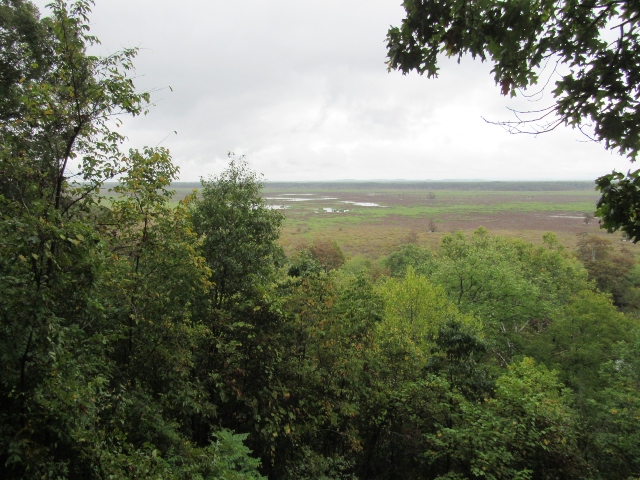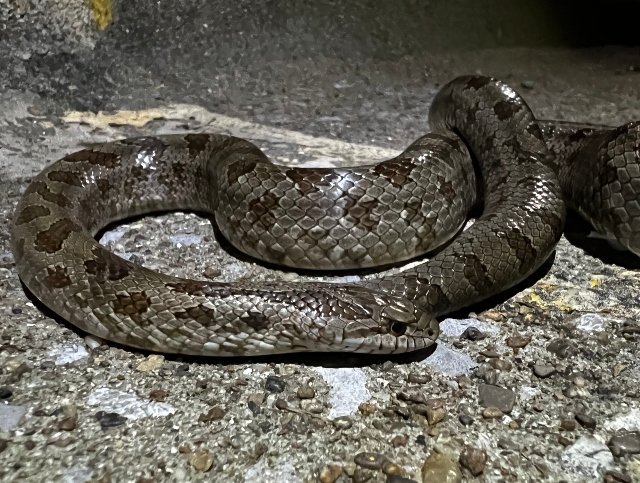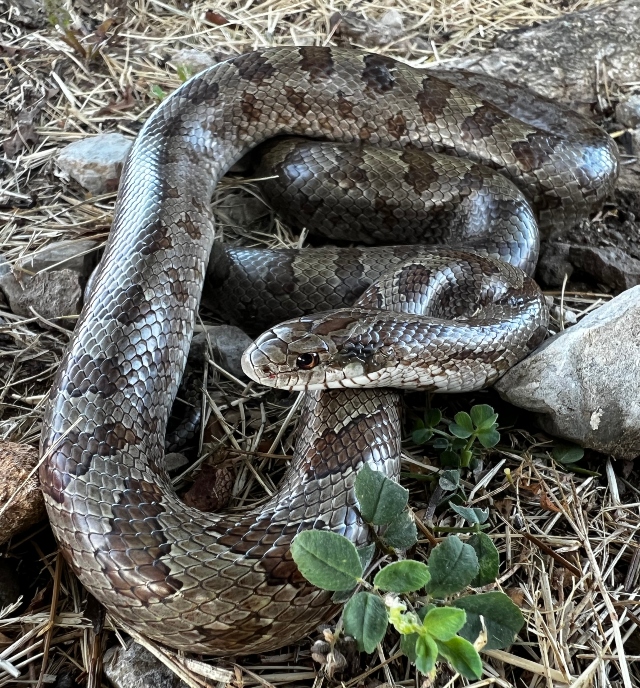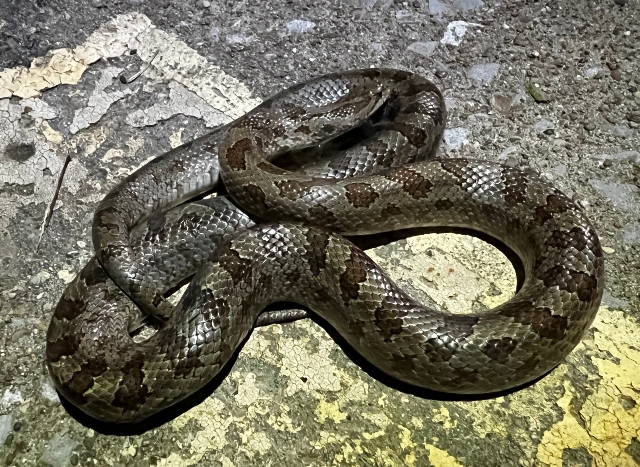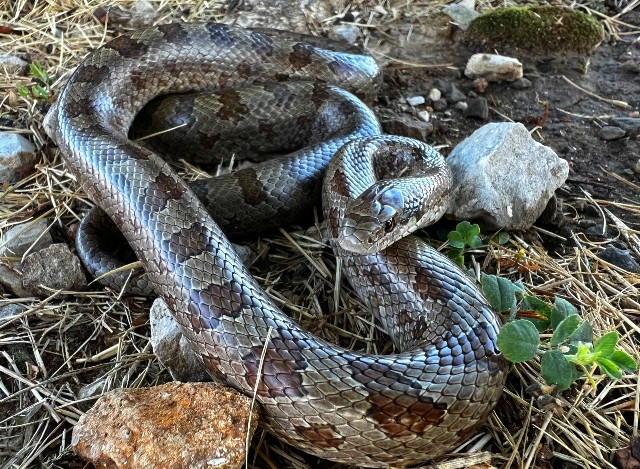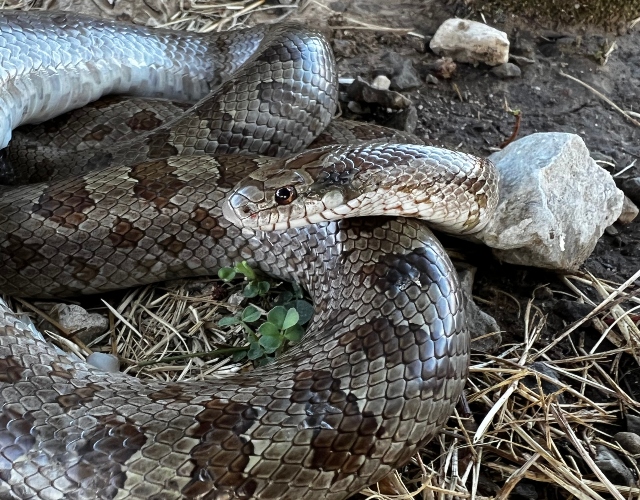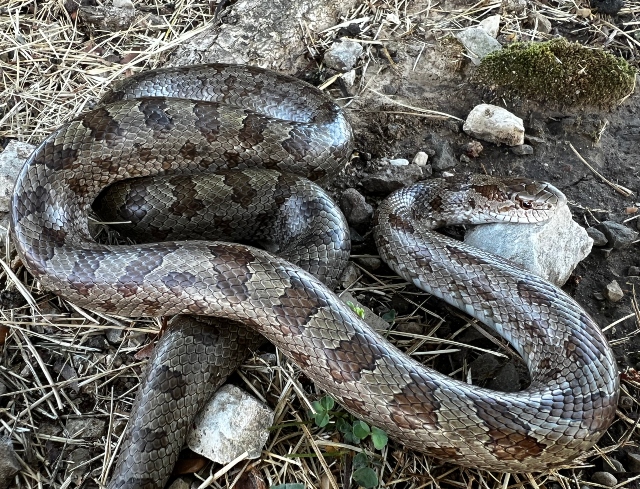While driving back to my hotel one evening last month after a long day of herping in Missouri, I crossed the Mississippi River and not long afterwards saw this snake crossing the road.
The Prairie Kingsnake is a medium-sized, tan or gray snake with numerous brown blotches. The top of the head usually has a backward-pointing, arrowhead-shaped marking, and there is usually a thin dark marking between each eye and down to the corners of the mouth.
The name “Prairie Kingsnake” is somewhat misleading because this common, harmless species lives not only in prairie habitats, but also along the edges of crop fields, hayfields, fallow farm fields, or the edges of open woodlots, on rocky, wooded hillsides, and near farm buildings.
Small mammals such as mice, voles, and shrews constitute some 60 to 80 percent of this reptile’s diet. It also eats lizards and occasionally small snakes. This species kills its prey by constriction. As with other kingsnake species, it is immune to the venom of Copperheads, Cottonmouths, and Rattlesnakes.
Although sometimes called the Yellow-bellied Kingsnake, the belly is often cream to tan in color and interrupted by faint rectangular or square markings that extend across several belly scales.
The Prairie Kingsnake is active during the day in Spring and Fall, but becomes nocturnal in the summer. It may be found hiding under rocks, logs or boards or in small mammal burrows. When disturbed, this 3 foot long snake may vibrate the tail rapidly, hiss and strike (although it is harmless to man).
This was a serpent that I’ve wanted to see in the wild for quite some time, so it was an excellent find on this year’s trip to the Midwest.

